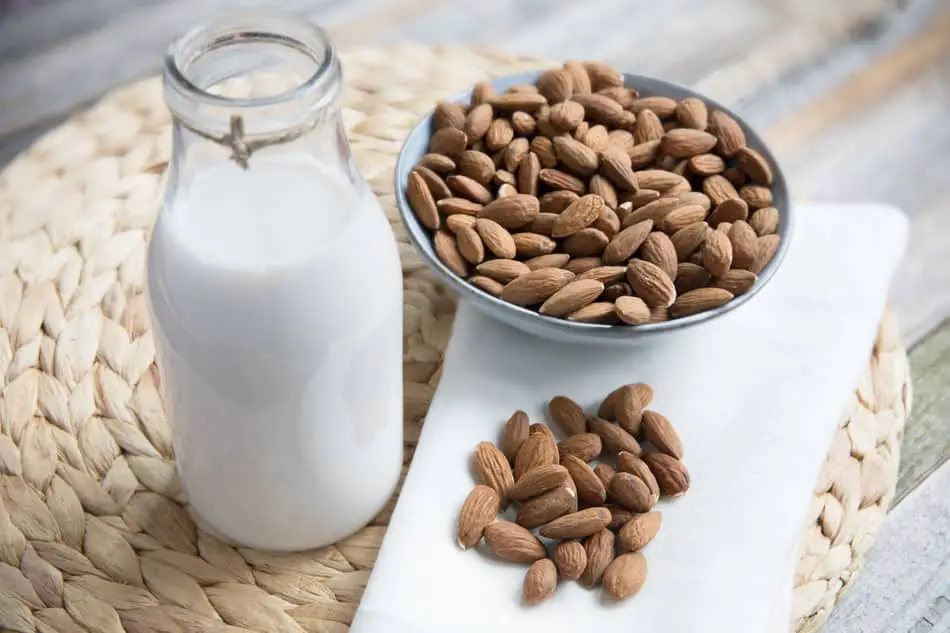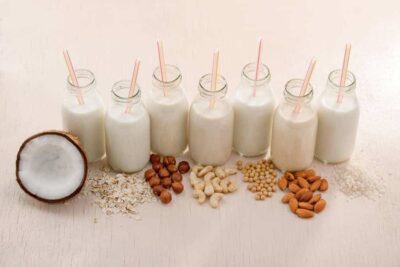
More and more people are turning to almond and other nut or non-dairy milks for health reasons. Nut milk has less saturated fat and fewer calories than cow’s milk, and lacks the hormones that can be found in animal-derived dairy.
But is almond milk just for cereal, or can you cook with it? The answer is yes, you can bake with almond milk, and most all the other types of nut or non-dairy milks. Some varieties are better than others for certain uses, and you’ll have the best result if you keep some tips in mind. Read on.
7 Tips for Baking With Almond Milk
- In general, you can treat almond and other non-dairy milks like regular milk when baking. Do a one-for-one substitution in your recipes. For example, if your recipe calls for a cup of milk, use a cup of almond or other non-dairy milk.
- No adjustments to leavening agents, like baking soda or baking powder, are need.
- Take note if your non-dairy milk is sweetened or vanilla-flavored. Many non-dairy milks come in either unsweetened or sweetened varieties, and plain or vanilla-flavored. If you use sweetened non-dairy milk, you may want to slightly reduce the sugar in your recipe. Similarly, if your nut-milk is vanilla-flavored, consider how it goes with your recipe. If vanilla is already an ingredient, consider reducing it slightly.
- Most non-dairy milks have a higher water content than cow’s milk. This means that your baked goods may bake faster when made with non-dairy milk. Set your timer 5-10 minutes early to avoid burning.
- Be aware that, although cooking with non-dairy milks will result in delicious baked goods, there will be differences in the final result. Muffins and cakes may be less fluffy, less browned, and a bit drier. And the flavor of the milk may come through; for example, almond milk will lend a slightly nutty flavor. In most cases, the differences are subtle. Or you may be able to neutralize them by trying different milks, or adjusting other ingredients and baking times.
- I asked the Almond Breeze company, a leading manufacturer of almond milk, what they thought about baking with their products. They concurred that you can substitute almond milk for regular milk, except that they do not recommend using almond milk to make instant pudding.
- If your recipe calls for heating the milk first, you can do so with non-dairy milk. If you are wondering if you can boil almond milk and other nut milks, read my article here.
The Best Non-Dairy Milk for Baking is Soy
In my opinion, soy milk is the best non-dairy milk for baking. It is the closest alternative milk to cow’s milk in terms of protein, as it provides all nine of the essential amino acids, and has the highest-protein content of all the non-dairy milks.
The higher protein of soy milk helps it give structure to baked goods like cakes and breads. It also helps them brown in an aesthetically pleasing way, as cow’s milk does.
In addition, soy milk has a neutral taste profile; you won’t notice the taste of soy milk in the final product.
The Worst Non-Dairy Milks for Baking are Rice and Oat
Rice milk tends to be more watery than other non-dairy milks. You can still use rice milk when you bake, but then add a thickener to your recipe, such as flour or corn starch. For every one cup of rice milk, add 1 teaspoon of thickening agent (you may have to experiment with this ratio).
Oat milk has a high level of natural sweetness. Take this into account in your recipe and consider reducing the amount of sugar slightly. Oat milk can also separate when heated, creating uneven quality and a poor texture in your baked goods.

Can You Use Almond Milk In Place of Buttermilk?
Yes, almond and other non-dairy milks can be used in place of buttermilk. To get the tangy taste of buttermilk, you need to curdle the nut milk, which is easy to do. Add one teaspoon white vinegar or lemon juice to one cup of almond or other non-dairy milk. Stir and let it sit at room temperature for 10 minutes. Milks with higher water content may need a little more vinegar.
Can You Use Almond Milk in Place of Cream or Half-and-Half?
You can buy non-dairy cream and substitute it one-for-one in your baking. As with milk, one cup of non-dairy cream should be used in place of one cup of cow’s milk cream or half-and-half. If you don’t have non-dairy cream, coconut milk (in the can; not the drinking milk in the refrigerated section) is the best substitute for real cream and half-and-half. Coconut milk has a higher fat content and brings a similar thickness and texture as real cream and half-and-half.
You can even whip coconut milk. Use less powdered sugar, and consider adding a thickening agent like soy milk powder to help give it structure. Note that it will lend a coconut flavor to your baked goods—but this can be an advantage, depending on your recipe.
Happy, healthy baking!
Can you boil almond milk? Find out here.
What are some great vegan coffee add-ins? 10 healthy options are here.
Is it expensive to be a vegan? See a cost analysis here.
Resources
- Battisti I, Ebinezer LB, Lomolino G, Masi A, Arrigoni G. Protein profile of commercial soybean milks analyzed by label-free quantitative proteomics. Food Chem. 2021 Aug 1;352:129299. doi: 10.1016/j.foodchem.2021.129299. Epub 2021 Feb 20. PMID: 33690076.
